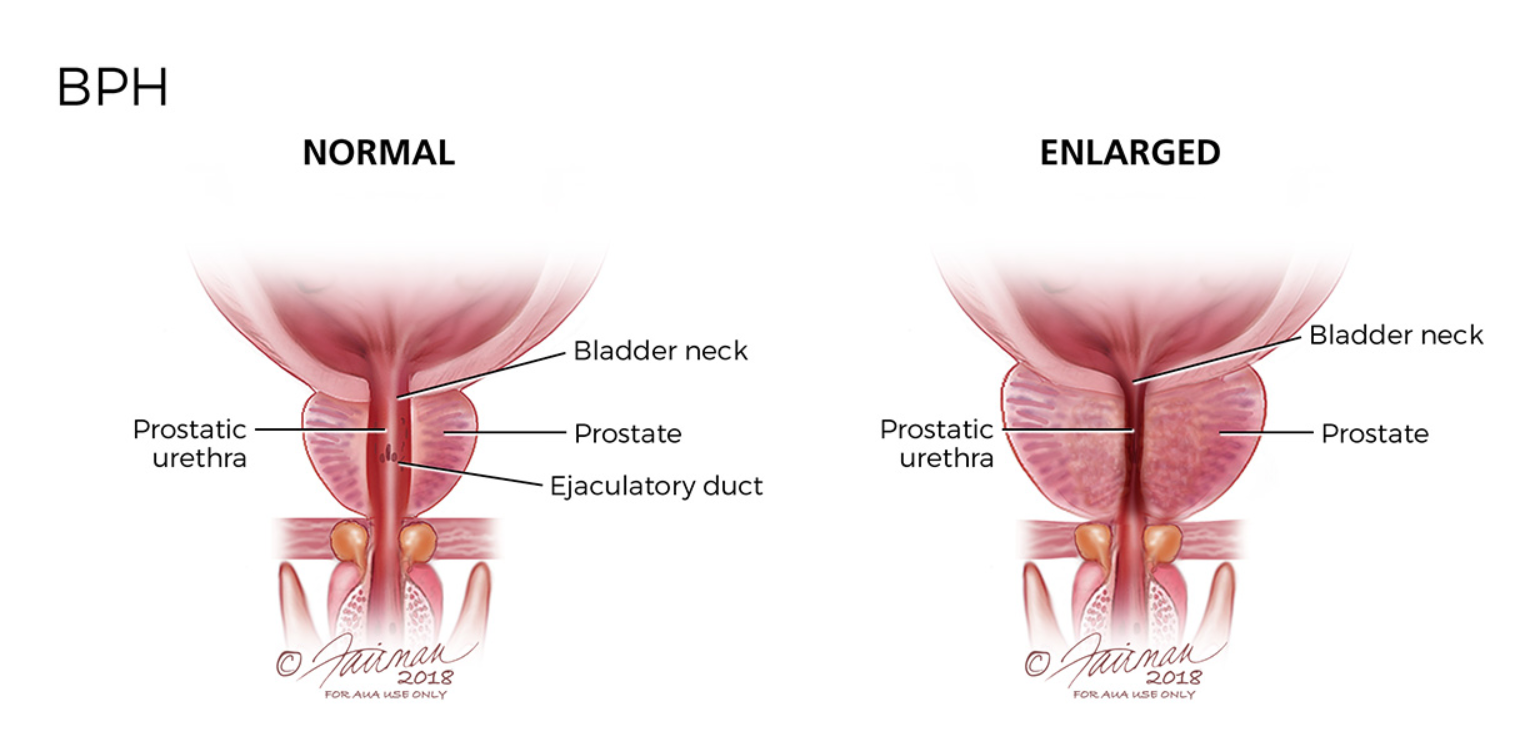Finasteride for Benign Prostatic Hyperplasia (BPH): Effectiveness, Advantages and Disadvantages
Understand the role of finasteride in treating BPH. Explore its effectiveness, advantages, and potential side effects before starting treatment.
Apr 19, 2023
Hair Loss
We'd love to tell you more
We won't bore you with the details, but Health Canada requires you to sign in.
By proceeding you agree to our Terms of Use & Privacy Policy
In this article
- What is finasteride?
- How well does finasteride work?
- How does finasteride compare to other medications for BPH?
- What are the side effects of finasteride?
The prostate is an organ that makes the fluid part of semen and sits where the bladder joins the urethra. At age 25, the prostate is about the size of a walnut. As you get older, the prostate gradually grows in size with each passing year. It can eventually become as large as an orange. This enlargement is called benign prostatic hyperplasia, or BPH. This is a common part of getting older. About half of all men older than 50 have some degree of benign prostatic hyperplasia.

As the prostate gets larger, it can pinch the urethra and weaken the bladder wall. This is what causes the symptoms men experience from BPH, such as:
- Needing to urinate frequently, especially at night
- Not being able to hold your urine as well
- Trouble starting or maintaining a urine stream
- “Dribbling” at the end of urinating
- Pain after urinating or ejaculation
Medications can help lessen these symptoms. One commonly used medication for this condition is finasteride, also known as Proscar.
What is finasteride?
Finasteride, also known as Proscar, is a once-daily pill for BPH. The typical dose is 5 mg (1 tablet) daily. Finasteride works by blocking the enzyme responsible for converting testosterone to dihydrotestosterone (DHT). DHT accumulates in the prostate and causes it to grow larger. By shutting down DHT, finasteride shrinks the prostate and reduces symptoms.
How well does finasteride work?
Finasteride has been shown to reduce the size of the prostate, decrease symptoms, and slow down the progression of BPH in large clinical trials1. It does take time for finasteride to work. In 3-6 months, you should notice some symptom improvement. You won’t see the full effect until you’ve been taking finasteride consistently for 6 months.
How does finasteride compare to other medications for BPH?
Other than finasteride, there are several other medication options for BPH. These include:
- Alpha-blockers, such as tamsulosin (Flomax), alfuzosin, or doxazosin. This class of medication works faster at relieving symptoms. They relax the smooth muscles of the prostate and bladder neck. You will notice improvement as early as 2-3 days. Alpha-blockers are oral once-daily pills. However, they can cause dizziness and low blood pressure, so it is best to take them at bedtime.
- Alpha-reductase inhibitors, such as dutasteride. Finasteride also belongs to this class of medication. Finasteride and dutasteride both work well at decreasing prostate size and improving BPH symptoms. They both take a few months to work.
- Phosphodiesterase-5 inhibitors, such as tadalafil. Although it’s usually used for erectile dysfunction, tadalafil can sometimes be prescribed for BPH. Tadalafil helps the muscles around the urethra and prostate relax so that urine can pass through more easily.
Choosing the best medication for you depends on several factors like the size of your prostate, your health, your lifestyle, and other medications you are taking. It’s important to check in with your doctor to decide on the best treatment plan for you.
What are the side effects of finasteride?
Because finasteride changes how testosterone works in your body, it can cause some sexual side effects. These may include:
- Difficulty getting an erection
- Lower libido (i.e., less interest in sex)
- Trouble having an orgasm
- Difficulty with ejaculation, e.g., smaller semen volume
Other rarer side effects include an allergic reaction, lumps or growth in breast tissue, depression, and pain in the testicles.
It’s important to know that most men taking finasteride don’t experience these side effects2. If any symptoms are bothering you after starting finasteride, speak to your doctor to find out what’s going on and get help with a solution.
Overall, finasteride is an effective medication for treating BPH. It shrinks the size of the prostate over time and decreases symptoms associated with BPH, such as difficulty with urinating. One of the key advantages of finasteride is that it does not cause side effects like dizziness or a drop in blood pressure. It is easy to take as a once-daily pill. However, finasteride can cause sexual side effects for some men, such as decreased libido or erectile dysfunction. Finasteride also takes several months to start working. To choose the best treatment plan for benign prostatic hyperplasia for you, it’s important to work with your doctor.
1 Tacklind J, Fink HA, Macdonald R, Rutks I, Wilt TJ. Finasteride for benign prostatic hyperplasia. Cochrane Database Syst Rev. 2010 Oct 6;2010(10): CD006015. doi: 10.1002/14651858.CD006015.pub3. PMID: 20927745; PMCID: PMC8908761.
2 Nickel JC. Comparison of clinical trials with finasteride and dutasteride. Rev Urol. 2004;6 Suppl 9(Suppl 9):S31-9. PMID: 16985923; PMCID: PMC1472914.
Join Pocketpills.
Get care that fits your life. See a doctor, order prescriptions, and manage your health from home, on your schedule.
Get StartedSimilar Articles

Finasteride for Benign Prostatic Hyperplasia (BPH): Effectiveness, Advantages and Disadvantages
The prostate is an organ that makes the fluid part of semen and sits where the bladder joins the urethra. At age 25, the prostate is about the size of a walnut. As you get older, the prostate gradually grows in size with each passing year. It can eventually become as large as an orange. This enlargement is called benign prostatic hyperplasia, or BPH.
Apr 19, 2023

Taking Finasteride and Tadalafil for Hair Loss and Erectile Dysfunction: Is It a Good Idea?
Explore the advantages and drawbacks of using Finasteride and Tadalafil for hair loss and erectile dysfunction. Find out whether this combination is advisable.
Apr 17, 2023

Finasteride and Shedding: Why it happens, how long it lasts and cycles EXPLAINED
This article will explain why finasteride causes hair shedding, how long it lasts, and what to expect. Gain key insights for managing hair loss effectively.
Sep 23, 2022

